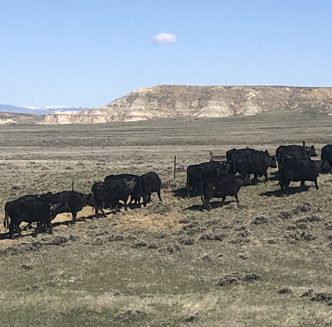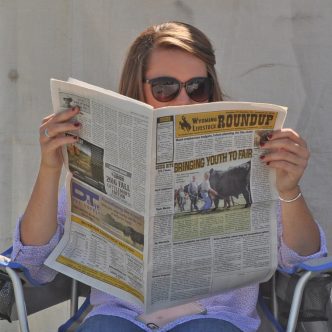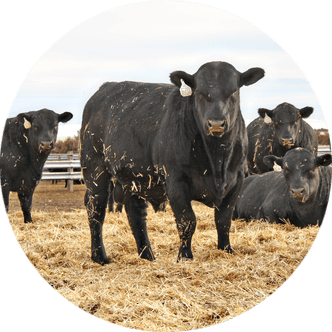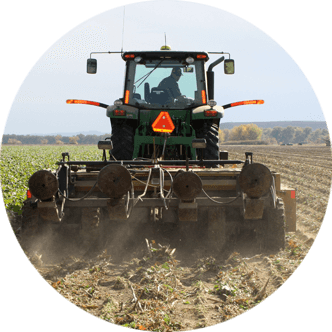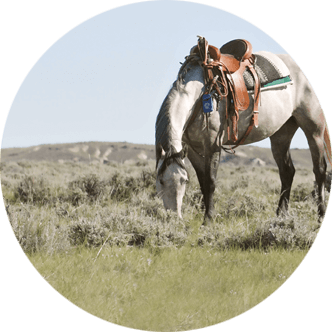Differing views on corner crossing discussed
Corner crossing has remained a pressing and important issue in the state of Wyoming, especially after the infamous Elk Mountain case that stirred up opposition about five years ago.
The case involved four out-of-state hunters sued by Elk Mountain Ranch Owner Fred Eshelman for corner crossing, the practice of stepping from one public land parcel to another at a shared corner.
Eshelman argued the act violated his airspace and constituted trespass.
However, a three-judge panel of the 10th Circuit Court of Appeals sided with the hunters, ruling corner crossing was in fact legal under the Unlawful Inclosures Act and access to public lands via corner crossing could not be blocked, so long as private land was untouched.
On May 1, during a panel discussion at the 2025 Wyoming Outdoor Recreation Summit held in Laramie, Ryan Semerad, the attorney who represented the four Missouri hunters, sat down with Wyoming Stock Growers Association Executive Vice President Jim Magagna to discuss differing perspectives on the hot button topic.
“We’re not here to debate winners and losers, but to better understand the legal, ethical and practical implications of these court decisions and what they mean for the future of recreation, hunting and land stewardship,” stated Dan McCoy, director of the University of Wyoming’s Jay Kemmerer Wyoming Outdoor Recreation, Tourism and Hospitality Institute, to kick off the panel.
Unlawful Inclosures of Public Lands Act
To begin, Semerad reiterated the decision made in the 10th Circuit Court of Appeals under the Unlawful Inclosures of Public Lands Act, which was enacted in 1885.
“This federal statute trumps any contrary state law, statute, regulation or court decision, and it says private landowners in the checkerboard of Wyoming, as well as other private landowners in the state, cannot use legal means including trespass actions to enclose interior public lands. There has to be a method of access,” he stated.
Magagna noted, from his perspective, the Elk Mountain court case “made it clear” the Unlawful Inclosures of Public Lands Act puts limitations of private property rights and leaves airspace unprotected.
“It was made clear, in this case, the decision applies in the 10th Circuit Court. It’s not intended to be a national decision, as I read it,” he said. “But we will be looking to make sure the right parameters surround it because it opened a little door that we don’t want to keep getting pushed open further.”
Magagna added, “I would agree the Unlawful Inclosures of Public Lands Act applies to all public lands, but as I read the court’s decision, I found it more specifically directed to checkerboard lands. So to decide how it may apply to lands in northeast Wyoming, for example, could, in my view, require different litigation.”
Semerad disagreed, noting he believes the act does apply to public lands outside of the checkerboard and at a national level.
He also reminded those in the audience about the limitations surrounding the 10th Circuit Court’s decision.
“It doesn’t mean you can go jump on your side-by-side or your four-wheeler and have at it. It doesn’t mean you get to go on private property without permission or consent,” he said. “What it means is youʼre have reasonable access – a step from one section to the next – so long as you are situated appropriately, you know where the monument marker is, you know where you’re going, you know your cardinal directions and you have respect.”
Semerad also noted corner crossing should only be used when there is not an alternative path of access.
Challenges and concerns
In addition to worrying about private property rights, Magagna mentioned a few other concerns plaguing Wyoming landowners.
The first issue he mentioned, for both sides of the coin, is point of access. He noted surveys indicating where an actual corner is – and the resulting monument markers – were done so many years ago, “they wouldn’t necessarily be accurate.”
He also said, “It’s pretty clear landowners can’t deny access to checkerboard lands, but does this mean they have to allow crossing at every corner? If I wanted to identify one of four corners to control as the access point, do I have the liberty to do this? Or if I want to designate a path through the middle of my private land, in lieu of granting access across a corner, can I do that?”
In response, Semerad stated, “Monument markers are legally perfect. Wherever they are, that is the corner, even if it’s not. The law says the corner is perfect, so where it was monumented, that is in fact where it is.”
“The bigger question is when the monument marker is missing, what do we do?” he continued. “It’s a question of proof, because both ways individuals need to know where they are as a land user. It’s their obligation.”
Collaboration
Despite their differing views, Magagna and Semerad agreed the best way to approach this contentious topic is through respect and collaboration.
“Put the legal side of this aside for a moment,” Magagna said. “The real answer to all of this, to me and to many of the people I represent, is the relationships we build in Wyoming between private landowners and the recreation and outdoor community, particularly sportsmen, hunters and fisherman.”
He noted, in his position with WSGA and being a landowner himself, he has had numerous conversations with other landowners, including those in the checkerboard, who happily grant recreationalists access to public lands and even offer suggestions on where they should go.
However, he has also received countless complaints about damage caused by individuals after they are given access, whether it is to grazing lands or people not respecting boundaries and “stretching their activities back on to private lands.”
While Magagna admitted not all landowners are going to be pleasant to work with, recreationalists should still exercise the courtesy of communicating with the landowner whose land they will cross.
“Cooperation and collaboration takes both sides, and I think, in my own personal experience, the recreation community in Wyoming has been good to work with, although there are always some exceptions,” he shared. “But with so many people coming into Wyoming from elsewhere, I think our opportunity and duty as citizens of this great state is to make outsiders aware of how we do business in Wyoming – through collaboration and cooperation, not through litigation, except in extreme cases when it is necessary.”
Semerad agreed, stating, “I wholeheartedly agree with Jim about cooperation. We need to remember to regain and foster a culture of cooperation when it comes to our public lands. This is how it is going to work moving forward.”
As of printing of this story, Eshelmanʼs legal team has until June 16 to appeal the March decision.
They have asked for a 30-day extension to file a petition seeking the Supreme Court review the case.
Hannah Bugas is the managing editor of the Wyoming Livestock Roundup. Send comments on this article to roundup@wylr.net.

